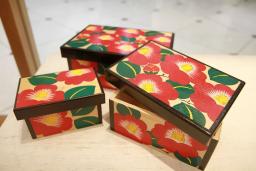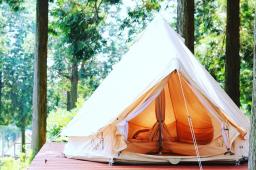The 3rd Stage of Kumamoto Castle's Re-Opening
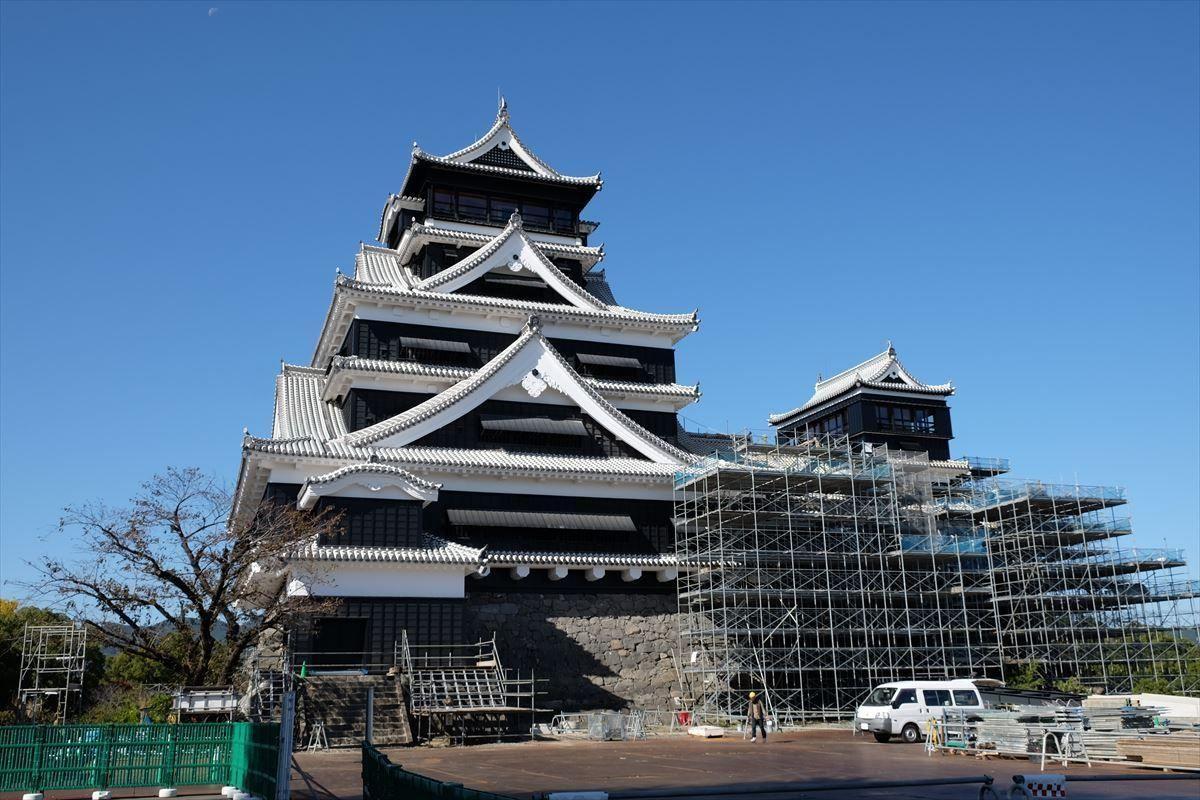
Kumamoto Castle was heavily damaged by two earthquakes in April 2016, both measuring a Shindo 7, the highest on the Japanese seismic intensity scale. The reconstruction has been progressing steadily and the 2nd stage of the castle's re-opening allowed visitors to come and view the reconstruction progress. The 3rd stage of the re-opening will begin in apring 2021, when the restoration of the castle's main keep will be completed. The head of Kumamoto Castle's General Office, Mr. Oda Tatsuo kindly showed us around the castle grounds.
The Awe-Inspiring Reconstruction of Kumamoto Castle
Kumamoto Castle, one of Kumamoto's main features, was built 400 years ago and is considered to be one of the three greatest castles in Japan. The castle, including 13 buildings which have been designated as nationally important cultural properties, was heavily damaged in the 2016 Kumamoto Earthquakes. With continued public support, the restoration efforts have been progressing. As part of the 2nd stage of the re-opening of the castle a special walkway was completed which allowed visitors to enter previously restricted areas and view the reconstruction progress.
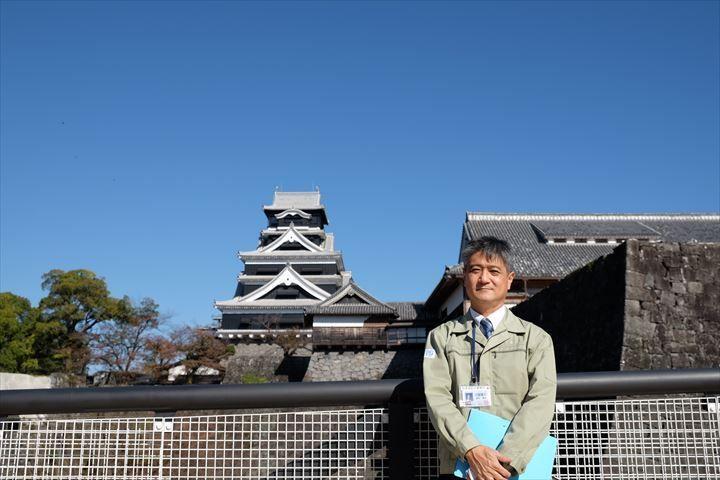
The restoration of Kumamoto Castle is currently expected to be completed by 2037. Mr. Oda told us that they are determined to restore the castle to its former state as quickly as possible. They would like visitors to learn about the castle and its restoration and Mr. Oda hopes that the lessons learned from the castle's reconstruction will be passed on to future generations.
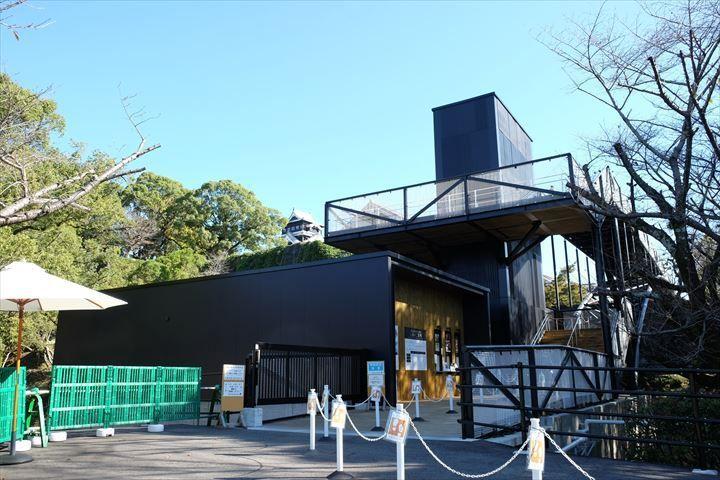
The 2nd stage of the re-opening began in spring 2020. This marked the opening of a special walkway which can be accessed from the South Ticket Office and allows visitors to view the castle from a different angle. This walkway is open to visitors every day, unlike the walkway unveiled in the 1st stage of the re-opening which was only accessible on Sundays and national holidays.
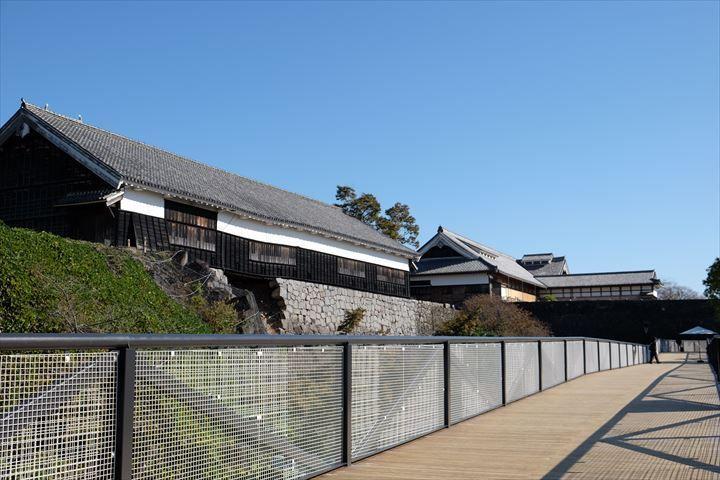
Soon after entering the walkway from the south entrance, the Sukiyamaru Hall can be seen on the left.
Visitors can see the current condition of the castle up close from this walkway made of local cypress wood. The wide path allows visitors to observe social distancing measures.
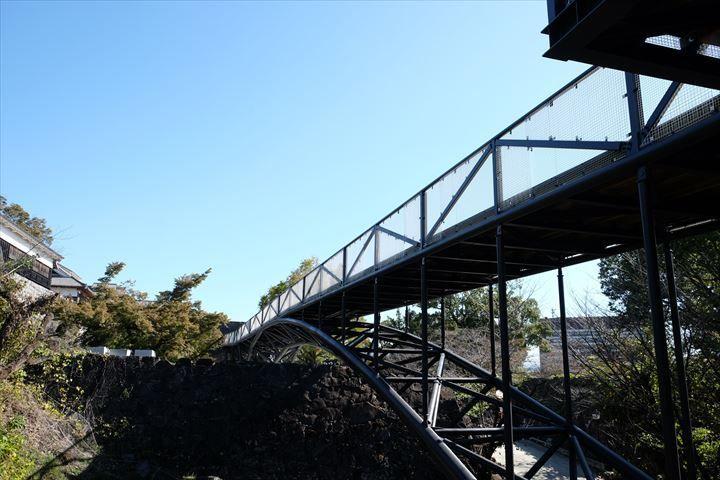
The "Special Observation Path" is a temporary structure which is 350 meters long and between 5 and 7 meters above ground level. The walkway was built in a way to minimise damage to the historical site.
From the walkway you can view the castle from a brand new angle.

The wooden walkway is designed to be accessible to all visitors, including children and those with limited mobility.
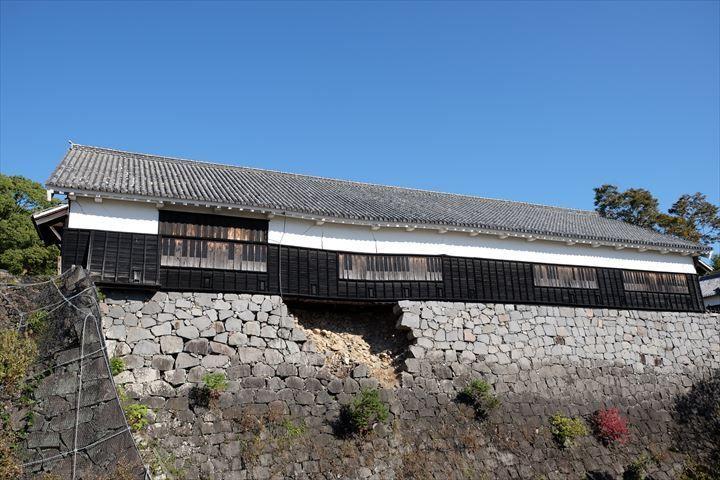
The stone walls of the Sukiyamaru Hall collapsed during the earthquake. The structure will be disassembled and repaired in the future.

A vacant lot can be seen opposite the Sukiyamaru Hall which will be the site of a future restoration. This location used to be where the Iidamaru Gokai Turret stood. Once the reconstruction begins it will be visible from the Special Observation Path.
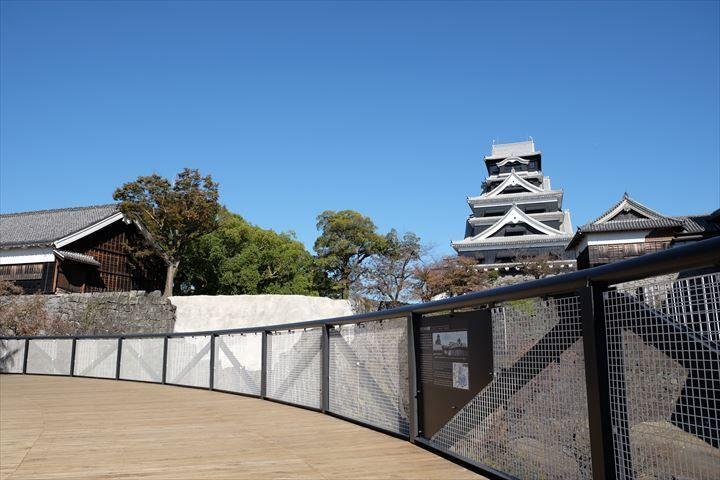
There are cherry blossom, plum blossom and ginkgo trees lining the sides of the path. These trees offer beautiful foliage colours in spring and autumn.
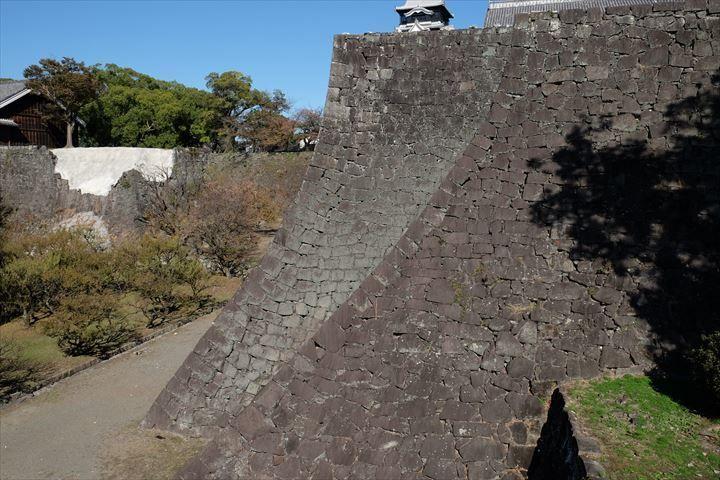
The stone walls of Kumamoto Castle are known as Niyo-no-Ishigaki. They were built using a method in which two different styles of wall were built over each other resulting in a steep curving structure which is effective in repelling any potential attackers.
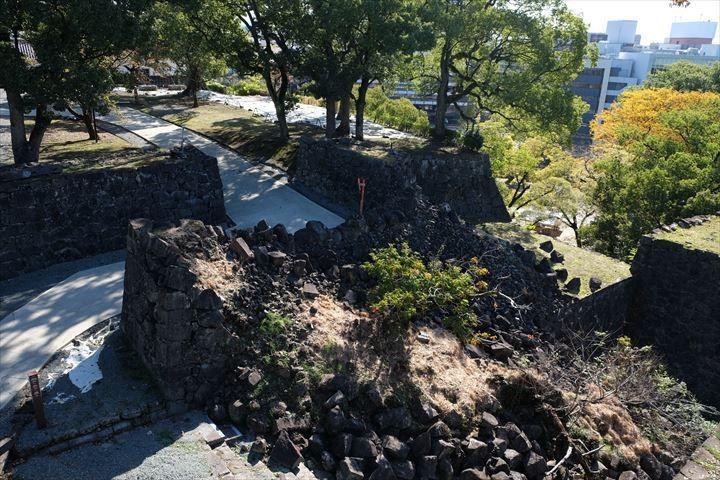
The area opposite the Niyo-no-Ishigaki is characterized by its zig-zag shaped passage which provides defence against invaders. Due to damage caused by the earthquak this passage is currently blocked by fallen stone walls.

The Special Observation path is fully accessible. The walkway can be accessed by elevator which makes it possible to explore the walkway with a wheelchair or baby stroller.
Electric wheelchairs are also available at the site.
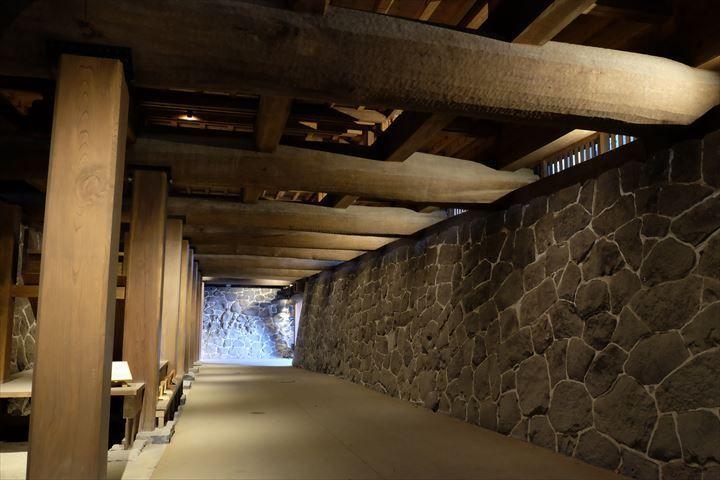
There is an underground passageway called “Kuragari-Tsuro” below the Honmaru Goten Palace. This is a rare structure, even amongst other Japanese castles.
Thankfully there was no serious damage to this passageway due to the earthquake and a limited area of it is accessible. The passageway leads from the Honmaru Goten Palace to the main keep.

The 3rd stage of the re-opening in spring 2021 marks the completion of the restoration of the main keep. An elevator will be available for visitors with limited mobility.
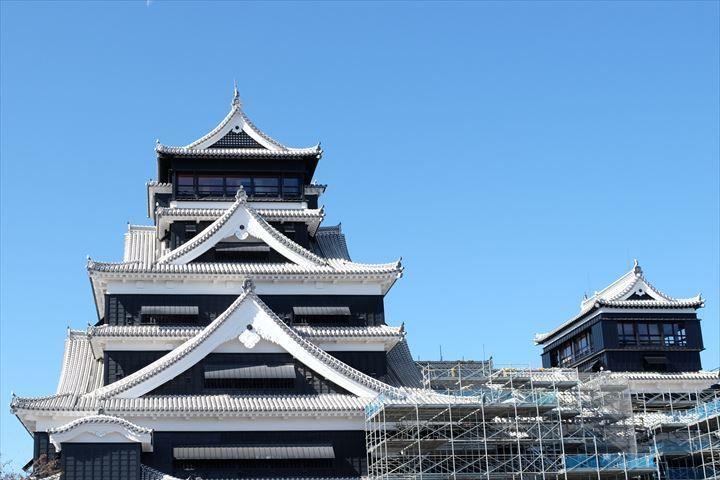
The white plaster of the joints and the black boards on the sides create a stunning contrast. The walls have recently been re-plastered in pure white, emphasizing this contrast further.
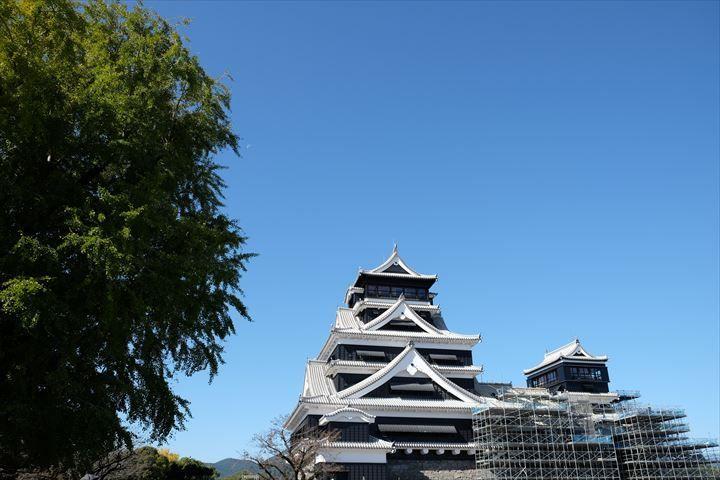
The large gingko trees near the main keep turn a deep yellow colour from late November to early December each year.
There is a rest area in front of the main keep from which you can see these trees and relax while looking at the castle.

Ninomaru Park offers beautiful views of Kumamoto Castle from many angles.
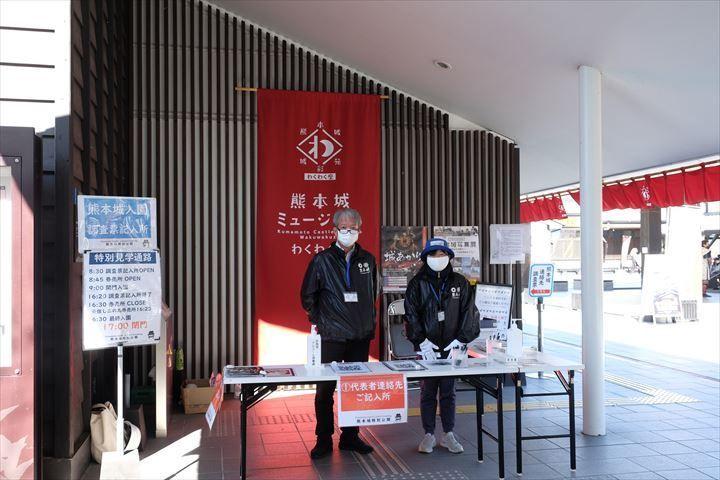
Visitors will be required to provide their name, contact information and to have their temperature taken before purchasing tickets from the ticket office. This is to prevent the spread of Covid-19.
The Main Keep Opens in Spring 2021
April 2021 will mark the fifth anniversary of the 2016 Kumamoto Earthquake. Restoration of the main keep will be completed and visitors will be able to enter this historic building as part of the 3rd stage of the re-opening. The top floor offers a panoramic view of Kumamoto City and the keep has many exhibits about the history of the castle.


| Place | Kumamoto Castle |
|---|---|
| Address | 1-1, Honmaru, Chuo-ku, Kumamoto City |
| Tel | 096-352-5900(Kumamoto Castle General Office) |
| Link | Kumamoto Castle |
| 2nd Stage Re-Opening |
Basic Ticket Price: Joint Admission Tickets: Kumamoto Castle, Waku Waku Castle Museum and Kumamoto City Museum: High school students and older \900 Admission: 9am-5pm (last admission 4:30pm) |
| 3rd Stage Re-Opening | The 3rd stage of the re-opening begins on April 26, 2021 The reconstruction of the main keep will be completed and visitors will be able to enter the keep for the first time since the earthquake. |

Inazumi Seiko
After working as an editor, sales, sometimes editor-in-chief at publishers in Kumamoto and Fukuoka, publishing family magazines, wedding magazines, local free paper etc., currently, she is working in a wide range of field as a freelance writer and an editor of “ineworks”.
Hobby is traveling, enjoying her life through the world, culture, interaction with people.
Favorite word is “Hibi kore koujitsu”, a Zen word meaning “Every day is a good day”.



